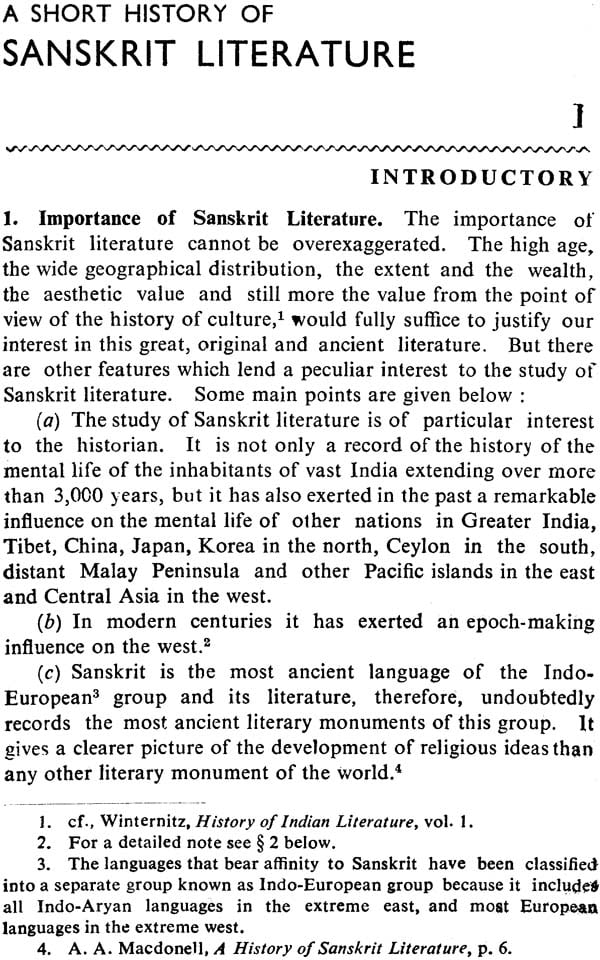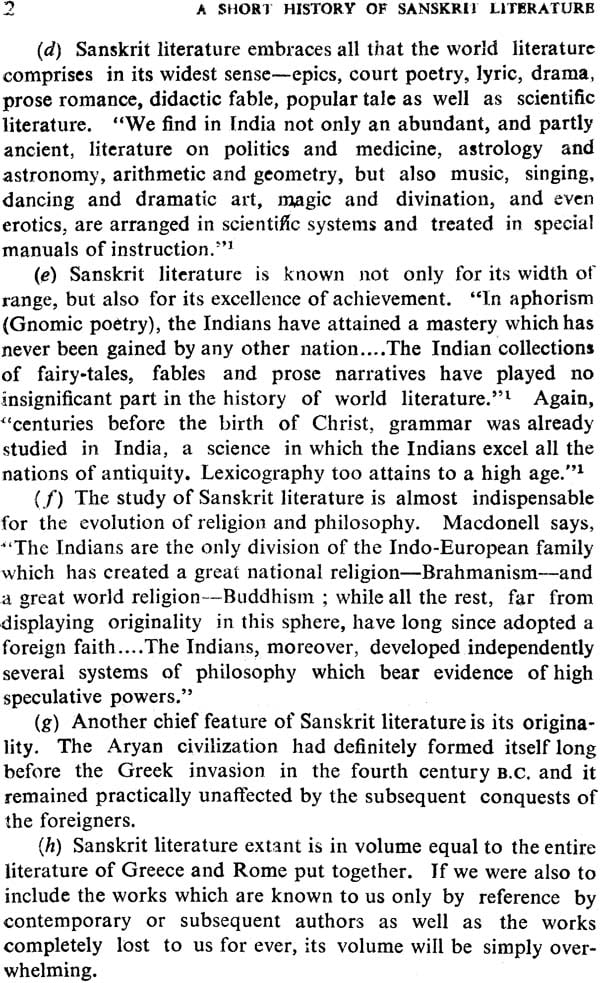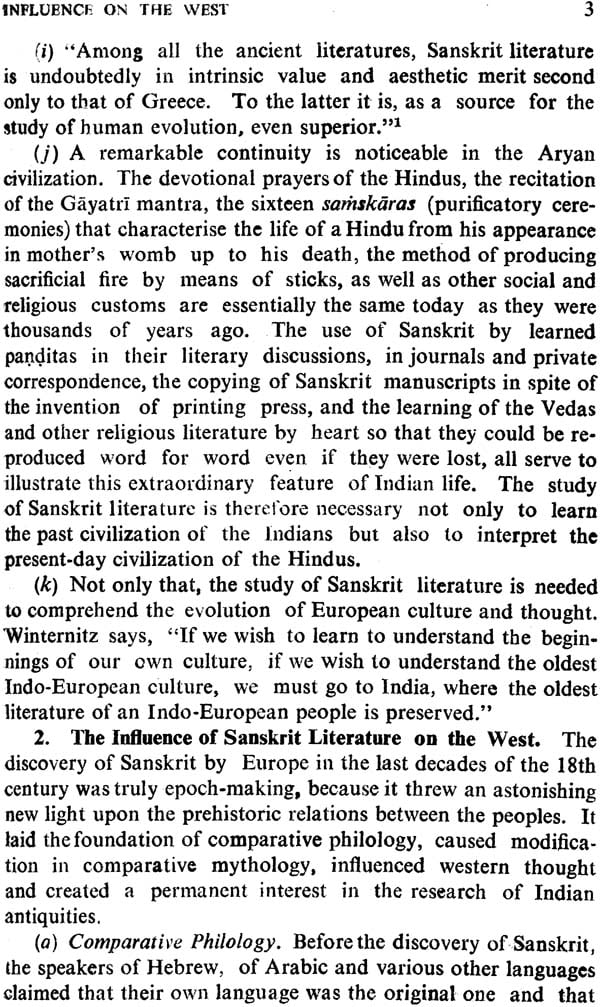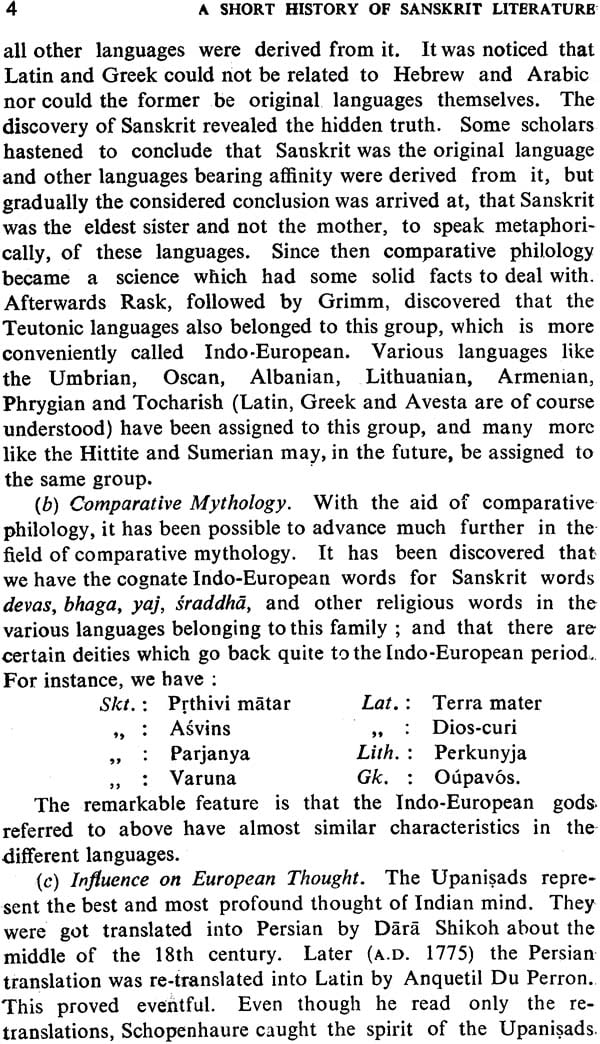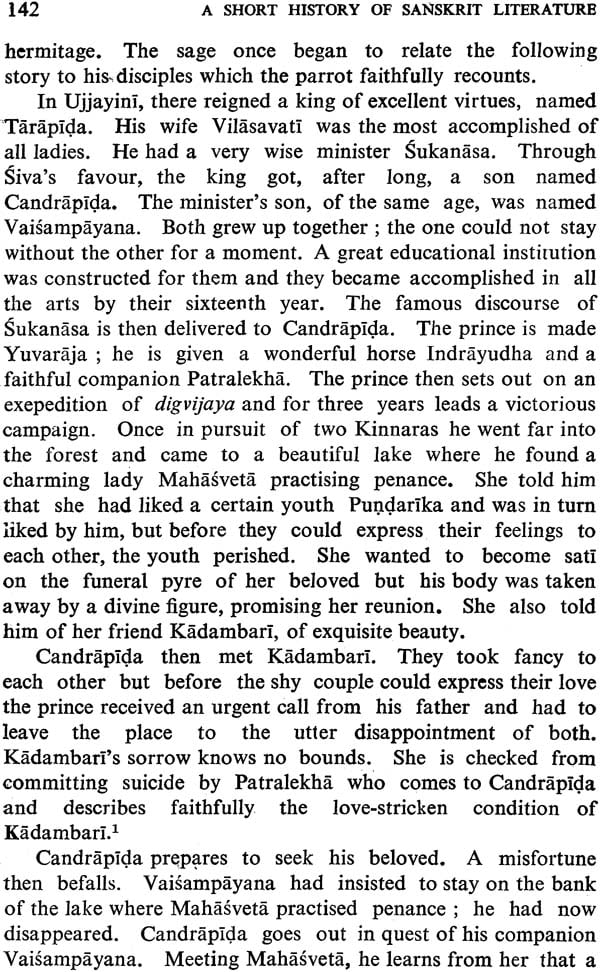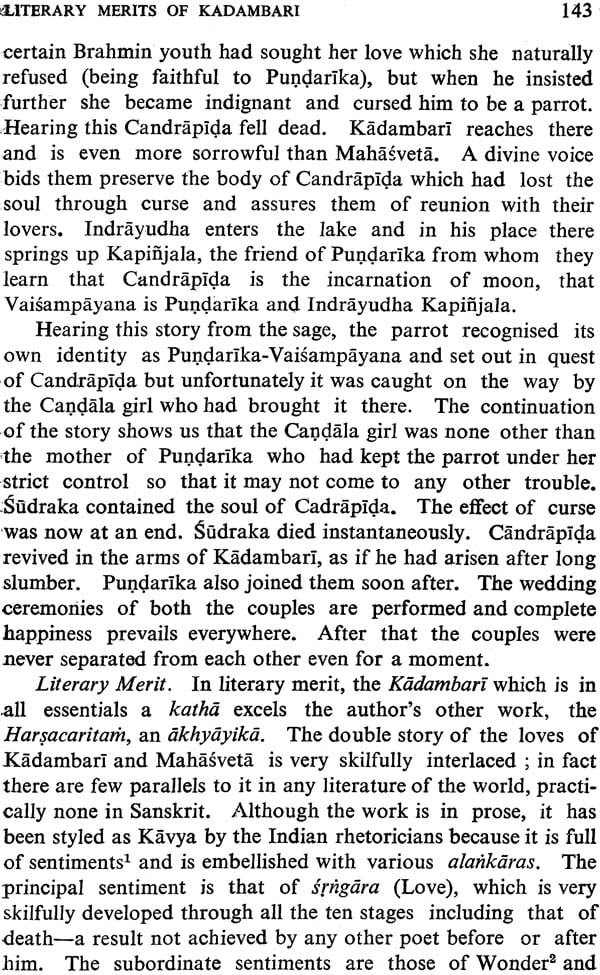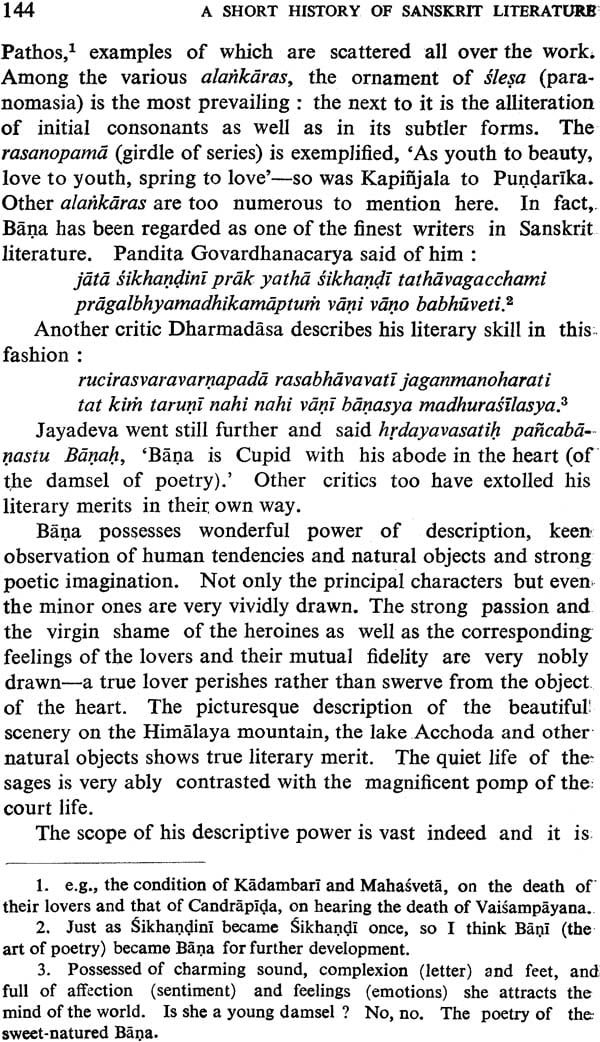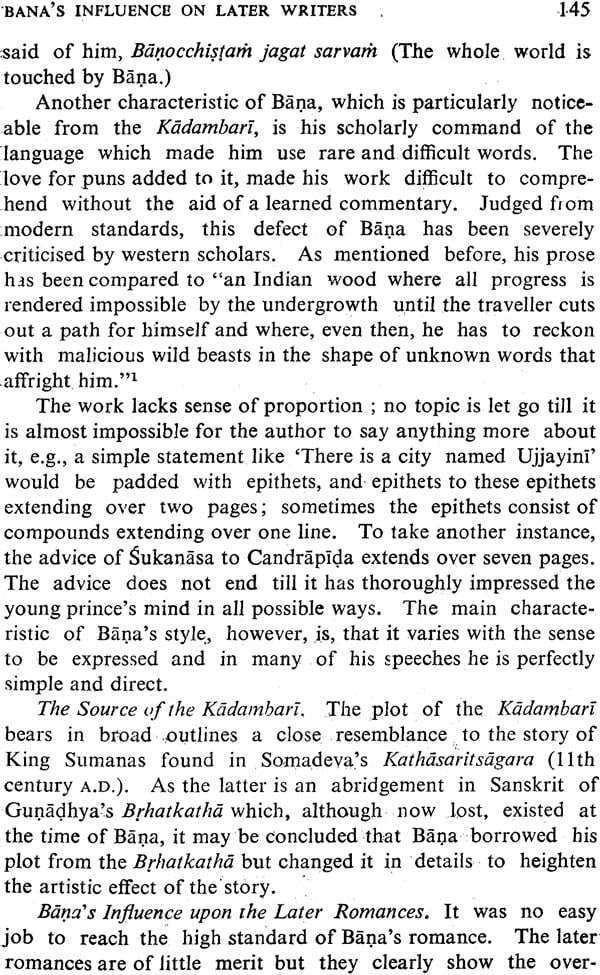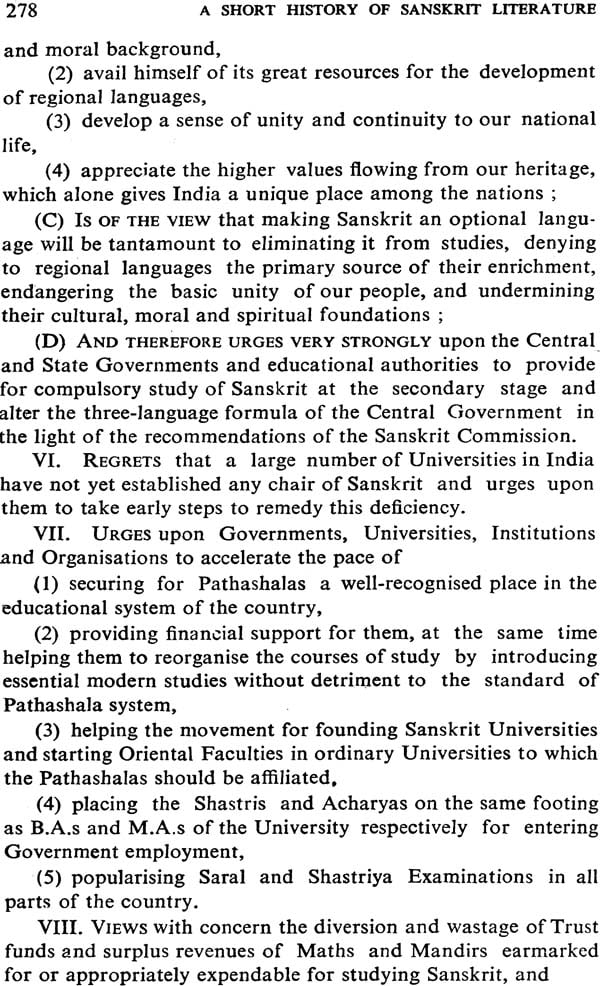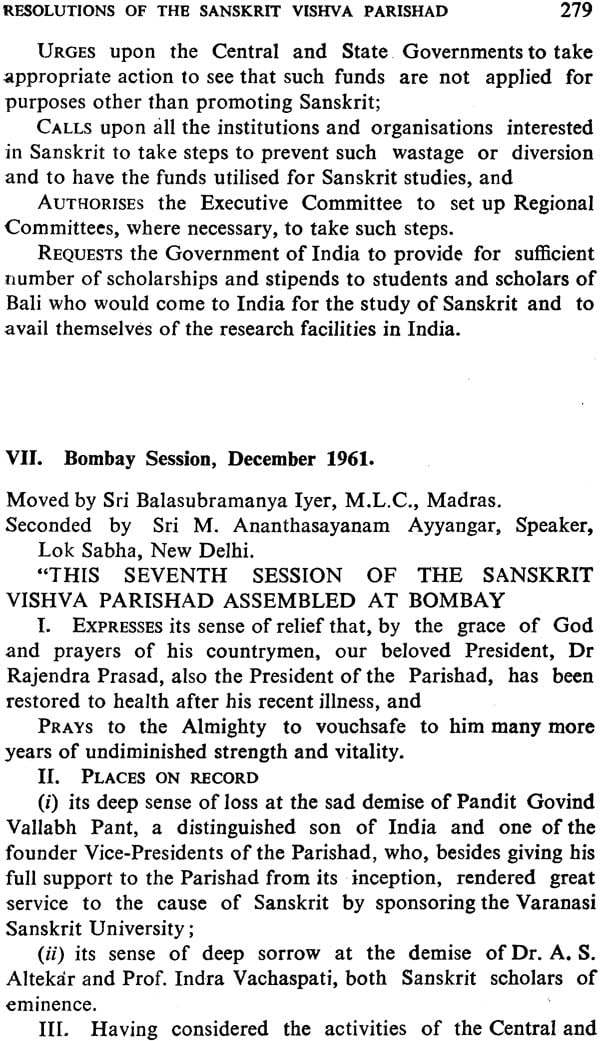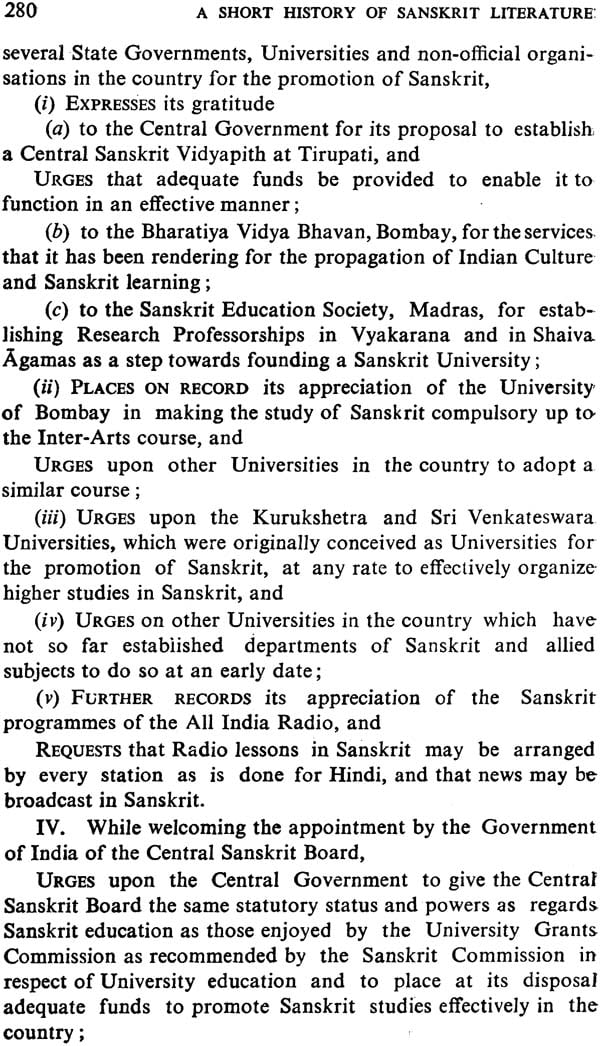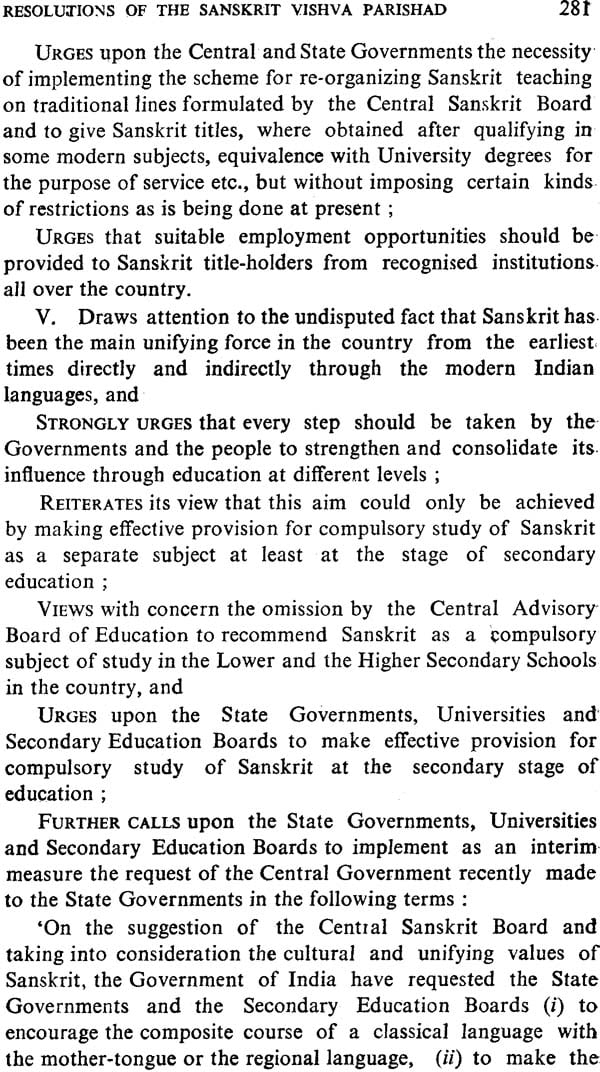
A Short History of Sanskrit Literature
Book Specification
| Item Code: | IDD844 |
| Author: | Hans Raj Aggarwal |
| Publisher: | MUNSHIRAM MANOHARLAL PUBLISHERS PVT LTD |
| Language: | English |
| Edition: | 1963 |
| Pages: | 323 |
| Cover: | Hardcover |
| Other Details | 8.5" X 5.5" |
| Weight | 330 gm |
Book Description
It is an irony of things that though Sanskrit literatures is a product of Indian mind, very few Indians have attempted the history of it, with the unfortunate result that in order to know how we look, we have to use some one else's spectacles!
Of the few such histories written by Indians, the present one by H.R. Aggarwal has long been acclaimed as one of the finest and the handiest. In this second revised and enlarged edition of the book, the author, backed by several years of his practical teaching experiences, has solved many of the difficulties which generally confront the students in understanding the subject.
Analytical in approach, direct in presentation and graceful in style, this edition makes the subject easier and more attractive. Avoiding all quibbling and hairsplitting which are a common feature of histories, the book, true to the dictum of Mallinatha, includes all that is important and leaves out all that is unimportant to the students.
This gem of a work has many facets
almost too many to enumerate. It has a number of appendices, the most important of which is an outline of the vedic period which will be of immense value to the Post
graduate students. There is another appendix which reproduces in one place the resolutions of the Sanskrit Vishva Parishad which are of significance in moulding the study of Sanskrit in this country in the years to come. There are other which trace the origin of the Indian alphabet and the spread of Sanskrit in the West. If the Sanskrit quotations used in the course of the text for purpose of illustration are given there in Roman transliteration for the benefit of the non
Nagari knowing readers, the same is shown in Nagari script in an appendix for the convenience of the student. In short, this is a book which in indispensable to student and a 'must' for the libraries.
Sanskrit Literature is vast and comprehensive. Its period of literary activity is longer than the period of literary activity of any other literature in the world. In intrinsic merit it is second to none. History is supposed to be the only weak spot. As far as political history is concerned, the alleged weakness is not quite apparent. Kalhana, the author of Rajatarangini has stated that he utilized eleven previous histories for writing his own famous chronicles of the kings, and he found numerous histories in the royal archives which were eaten by worms and had become illegible and could not therefore be utilized. This statement of Kalhana clearly sows that political histories were written in Sanskrit.
But, so far as history of literature is concerned, there is no evidence to show that any history of Sanskrit literature was ever written in any Indian language. This is a modern western Indologists. Most of the histories of Sanskrit literature are written by European and American scholars. It is, however, obvious that foreigners, howsoever cultured, cannot thoroughly appreciate or deeply enter into the spirit of the literature of a race or community which differs so widely in civilization, culture, philosophy, art and outlook on life. Literature of a race or community is the outcome of heredity, environments, geographical situation, climatic conditions and political institutions. It is, therefore, a difficult task for a foreigner to interpret accurately the literature of another race or community. It is time that Indians themselves wrote histories of their own literature and themselves interpreted the underlying spirit thereof. On this ground alone, I should welcome this History of Sanskrit Literature written by Mr. H. R. Aggarwal, M.A.
Mr. Aggarwal is a scholars of repute and a Fuller Exhibitioner and Gold Medallist of the Panjab University. It is a happy sign of the times that Indians have begun to take interest in the history of their own literature. He is the first Punjabee and I think one of the very few Indians to write a history of Sanskrit literature. At present, there is no work available which may suit the needs of the undergraduate students and help them in the study of the history of Sanskrit literature, as most of the histories available are of too high a standard for them. This book has been specially written with a view to satisfying the needs of the undergraduates. He has taken great pains in writing this history, and I have no doubt that this will eminently serve the needs of those for whom it is intended.
History of Sanskrit Literature has been my special subject. Even while I was a student of the IV Year class I wrote the following in the college magazine.
"It is a matter of surprise to me as to why some of the Indian Sanskrit scholars do not take upon themselves the task of writing an authenticated history of Sanskrit literature. It is a disgrace to the whole Indian community that even for the study of its own cultural language it has to depend upon materials collected and the works composed by foreigners. We
at least those who having become scholars think it not proper to enter this field and the others who cannot derive any benefit from them at least in this field
ought to be grateful to these western scholars although it is true that they did not labour for our sake.
"We find some works on the history of Sanskrit literature by Indians as well, but sorry to say, that they see to have taken no pains in their compilation. They have thought it proper to follow the western scholars without going through the original texts or even doubting the truth of their writings.
"Macdonell is an able successor of Max Muller. He has written a history of Sanskrit literature. A cursory reading of it shows that many of his remarks are off
hand.
"On p. 332 he writes, 'Vasavadatta by Subandhu relates the popular story of the heroine Vasavadatta, princess of Ujjayini, and Udayana, king of Vatsa.' It is a mistake no less than if an Indian were to say that The Merchant of Venice by Shakespeare relates the story of Macbeth.' I do not know how many Europeans would there be who would excuse this supposed Indian, yet there are Indians who regard such mistakes as trivial in spite of the fact that a great responsibility lies upon such distinguished writers who are taken by many as absolute authorities
"Even Indian scholars like Mahesh Prasad B.A. and M. Chakravarty M. A. have been misled by this credulous nature of theirs and have committed the same mistake in their works simply because they followed Macdonell.
"It is a matter of joy to learn that Keith has been able to correct a part of it by saying that the hero was Kandarpaketu, but he is also mistaken inasmuch as he calls Vasavadatta the princess of Pataliputra while she was actually that of Kusumapura
I have had to quote this long extract from the article because it is in a way responsible for the writing of this book. When I wrote the articles, fourteen years ago, I had no idea of doing my M.A. in Sanskrit. I could then little foresee that I would have to undertake this arduous task myself one day. But once when in a moment of leisure I chanced to see this article, the opening words of the extract, "Why do some of the Indian Sanskrit scholars not take upon themselves the task of writing an authenticated history of Sanskrit literature," began attempt in my own humble way. I am fully conscious of the voluminous nature of the task and my own limited capacity; the present work is yet far from the realisation of my dream, still I have agreed to its being published, feeling 'something is better than nothing.'
This book is intended for the students appearing in the B.A. and B.A. Hons. Examinations of the various Indian universities. Several years of practical teaching experience of the subject has enabled me to visualize somewhat the main difficulties of the Indian student and I have tried to solve them here as far as possible.
My chief aim in the writing of this book has been to make the subject easier and more attractive to the students of Sanskrit literature. To achieve that end, I have mainly followed the analytical method and have preferred, for ex mple, to give a complete account of the master
poet Kalidasa in one place rather than describe him in three different places as a mahakavya writer, as a dramatist and as a lyric writer. The simplicity of language has been aimed at, and the results arrived at by modern research have been incorporated wherever possible. According to the dictum of Mallinatha, this work includes all that is important and excludes all that is un
important from the point of view of students.
I am deeply grateful to various authorities
the notable among them being Professors Macdonell, Keith, Winternitz, Peterson, Thomas, Hopkins, Rapson, Pargiter and Edgerton
whom I have consulted in the preparation of this book and have specifically acknowledged in the footnotes. My special thanks are due to my revered teacher Dr. Lakshman Sarup, M.A., D. Phil., Officier D' Acadamie, Professor of Sanskrit, University of the Panjab, Lahore, at whose feet I sat and learnt much that is contained in this work. I am also deeply indebted to him for his having taken pains in writing the Foreword to this work.
| | |
| Importance of Sanskrit Literature The Influence of Sanskrit Literature on the West Lack of Chronology in Sanskrit Sanskrit and Modern Languages Sanskrit as a Spoken Language Characteristics of Classical Sanskrit. | 1 |
| THE POPULAR EPICS: RAMAYNA AND MAHABHARATA | |
| The Origin of Epics Poetry The Ramayana The Mahabharata Inter relation of the Two Epics. | 17 |
| THE PURANAS | |
| The Origin of the Puranas The Development of the Puranas Contents History in the Puranas Ancient Genealogies-Date | 37 |
| BHASA | |
| Bhasa's Position in Sanskrit Literature Do the Plays attributed to Bhasa belong to the Same Author? Bhasa's Other Works: Yajnaphalam, Visnudharma His Style Date | 45 |
| The ARTHASASTRA OF KAUTILYA | |
| A Contribution of the Deccan The Author date of the Work style | |
| KALIDASA | |
| Renaissance of the 1st Century B.C. Kalidasa and His Works Malavikagnimitram-Vikramorvasiyam-Abhijnana Sakuntalam Rtusamhara-Meghaduta-Kumara sambhavam Raghuvamsa-The Genuine Portions of Kalidasa's Work-Recensions of the Play-Date of Kalidasa-His Thought and Style | 63 |
| ASVAGHOSA | |
| Asvaghosa and his Dramatic Art Buddhacaritam and Saundarananda His Other Works His Style | 86 |
| MAHAKAVYA | |
| General Features Bharavi's Kiratarjuniyam Bhatti's Ravanavadha (Bhattikavya) Magha's Sisupalavadha Ratnakar's Haravijaya Sriharsa's Naisadhyam. | 94 |
| KAVYA AND ITS AUTHORS | |
| Vatsabhatti-Kumaradasa-Vakpati-Kaviraja Haradatta Suri-Cidambara-Halayudha-Mentha Matrgupta-Bhaumaka-Sivasvamin-Abhinanda Ksemendra-Mankha-Ramachandra-Some Jaina Works The Renaissance Theory of the 6th century A.D | 103 |
| LYRIC POETRY AND ANTHOLOGIES | |
| Origin of Lyric Poetry Srngaratilaka Ghatakarpara -Sat-sai-Bhartrhari-Amaru-Mayura-Matanga Divakara-Mohamudgara-Silhana-Bilhana-Jayadeva Silabhattarika-The Anthologies: Kavindra-vacana samuccaya, Saduktikarnamrta, Subhasitamuktavali, Sarngadharapaddhati, Subhasitavali, etc.-Gnomic Poetry | 110 |
| HISTORICAL KAVYA | |
| The Commencement of History in India Bana's Harsacaritam Padmagupta's Navasahasankacaritam Bilhana's Works Kalhana's Rajatarangini Minor | 122 |
| THE PROSE ROMANCE AND THE CAMPU | |
| The Origin of the Prose Romance-Dandin-Subandhu Bana-The Later Romances-the Campu | 131 |
| THE POPULAR TALE | |
| Gunadhya's Brhatkatha-Budhasavamin's Slokasangraha Ksemendra's Brhatkatha-manjari -Somadeva's Kathasaritsagara Vetalapancavimsatika-Sukasapatati-Simhasana dvatrimsika -Buddhist Literature: Avadana satakam, Divyavadana and Jatakamala-Jaina Literature: namitibhava-prapanca-kathi and Parisistaparavan. | 148 |
| THE DIDACATIC FABLE | |
| Characteristics of the Didactic Fable-Origin The Original Pancatantra-Its Author-Place of Origin -Date-Language-Contents-Styel-Tantrakhyayika The Textus Simplicior -Purnabhadra's Pancakhyanaka -The Southern Pancatantra-The Nepalese Version Hitopadesa-The Brhatkatha or the North-Western Version -The Pahlavi Version-Migration of the Fable to the West | 163 |
| THE DRAMA | |
| The Origin of the Drama-The Traditional Theory -The Religious Origin-The Secular Origin-The Greek Origin of Drama-The Characteristics of the Sanskrit Drama -Some Important Plays-Sudraka's Mrcchakatika -The Three Plays ascribed to Harsa: Ratnavali, Priyadarsika and Nagananda-Visakhadatta's Mudraraksasa -Bhatta Narayana's Venisamhara-Bhavabhuti's Mahaviracaritam, Malatimadhavam and Uttaramacaritam Rajasekara's Plays-Dinnaga's Kundamala-Murari's Anargharaghavam Krsnamisra's Prabodhacandrodayam-The Decadence of Drama. | 182 |
| | |
| General outline:Rgveda- General Description - Arrangement Chronological Strata in Rgveda Importance and the Age of the Rgveda - Its Interpretation - Religion and Philosophy in Rgveda Subject-matter - Recensiona - Accent - Metre. | 214 |
| The Later Vedas: Samaveda - Relation with other Vedas Form - Division and scope - Internal and Comparative Data Commentaries - Recensions. | 235 |
| Yajurveda : Sukla -Yajurveda - Contents -its Original Text Commentators - Krsna-Yajurveda - its Recensions and Commnetaries Date of the Yajurveda. | 237 |
| Atharvaveda - Traditional View about its Origin - Scope and Subject-matter - Recensions - Prominent Sages of Atharveda | 241 |
| The Brahmanas - Their Contents and Importance - Subject matter - The Brahamanas of Rgveda - of Yajurveda - of Samveda of Atharvaveda. | 242 |
| The Aranyakas - The Upanisadas - The Sutras and the Six Vedangas The Anukrmanis - The Parisistas. | 245 |
|
| |
| How Sanskrit came to be known to the West | 255 |
| | |
| The Origin of the Indian Alphabet | 258 |
| | |
| Resolutions of the Sanskrit Vishva Parishad | 264 |
| | |
| Test Questions | 284 |
| Questions of the Punjab University Examination | 286 |
| | |
| The Quotations in the Nagari Script | 293 |
| | |
| English Index | 313 |
| Sanskrit Index | 316 |
